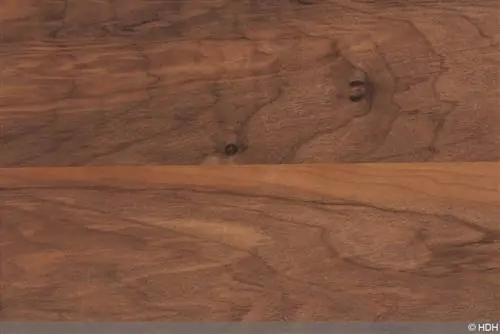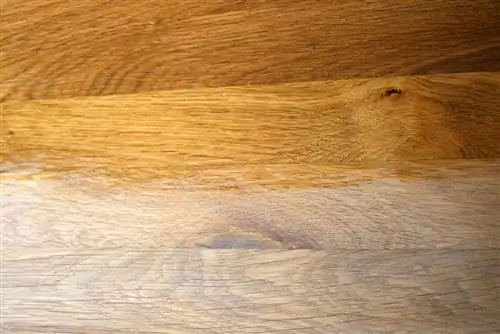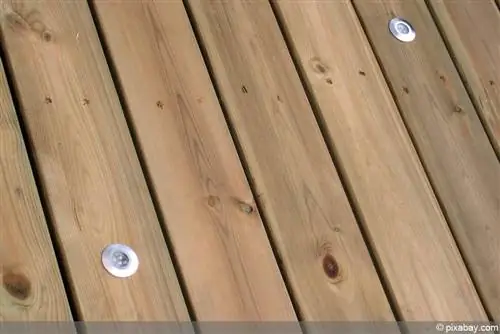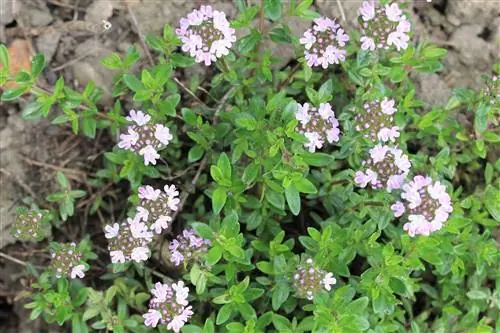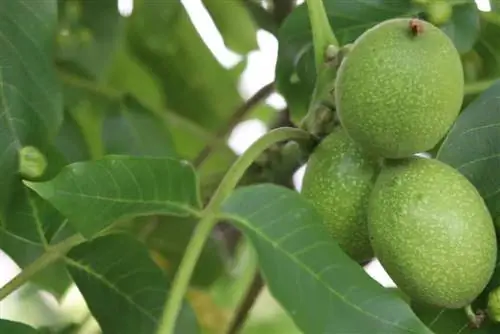- Author admin [email protected].
- Public 2023-12-17 03:39.
- Last modified 2025-01-24 12:45.
The widely used name walnut is misleading because the wood does not come from any type of walnut tree. Instead it is walnut wood. A distinction is made between European and American versions. Due to its properties, it is a very popular and versatile material. But what are the properties and special features of this type of wood? We reveal the typical features.
Species
The wood is fundamentally divided into two types: European and American walnut. The differences lie on the one hand in the origin and on the other hand in the respective properties and prices. What the two variants have in common is that they are walnut species. When purchasing, you should therefore pay particular attention to which type you choose.
Consistency
European variants are comparatively resistant to weather and fungi. However, without appropriate and regular protection, insects and sunlight can become problematic. Insects can damage the material. Sunlight can cause discoloration.
Tip:
Use outdoors is therefore not recommended.
The American species have significantly lower resistance to weather, fungi, insects and light. It should therefore only be used indoors.
Grain and color
In addition to its hardness, walnut is particularly popular for the grain of its wood. It is striking and attractive, can be cloudy and soft. There are significant differences and great diversity in coloring. Possible are:
- gray white or light gray
- reddish white
- red-brown
- chocolate brown
- dark brown
The tint depends on the species, but location, age and weather also play crucial roles.
Hardness and strength
European walnut wood has a hardness of 32 N/mm². In the American version it is still 26 N/mm². For comparison: spruce and alder are only N/mm², pine wood is 19 N/mm². The smelt density of walnut wood is between 0.57 and 0.81 g/cm³. This makes the material very hard and very heavy. However, it is important that it was allowed to dry slowly. When purchasing, you should therefore pay attention to high-quality storage and processing. The American type in particular works harder, which is why bending and greater shrinkage can occur.
Uses
The possible uses of walnut wood are very diverse. Floors, furniture and doors are made from it. But also musical instruments or weapon handles. European walnut wood in particular is very tough and can be bent easily. Both variants are particularly valued for their attractive grain and great hardness.
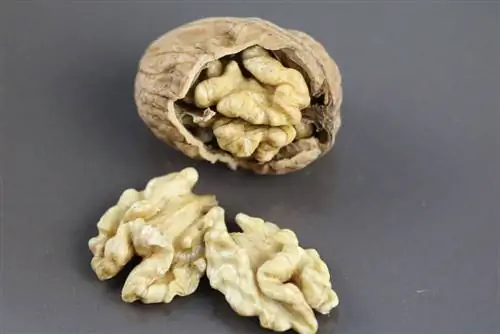
As mentioned, there are differences between European and American versions when it comes to resistance to weather and insects. In general, however, the woods are less suitable for outdoor use. Weather, insects and sunlight can attack it and cause it to brown.
Price
The European walnut tree is rarer. It is more durable and heavier, and usually slightly harder. This allows it to be sold at higher prices. Expect 2,300 euros per cubic meter and more. American versions, which are also sold under the name Black Walnut, are slightly cheaper. Nevertheless, prices for a cubic meter start at around 1,800 euros. Due to the high prices, it is worth comparing different providers and creating your own price list. However, various factors should be taken into account.
These include:
- Pretreatment: Has it already been steamed or polished? The more pre-treatments have taken place, the more expensive the material usually is.
- Dimensions: Narrow board or large pieces of burl wood. The larger the continuous piece, the higher the prices.
- Type: Sapwood, heartwood or rootwood of the walnut? The differences in grain and size are also reflected in the prices.
Caution: tanning
As decorative and durable as the natural material is, it can still change due to various influences. Light plays a particularly important role here. If furniture or other elements made of walnut wood are constantly exposed to light, so-called browning can occur. The wood surface darkens and the natural grain becomes less noticeable.
It is therefore important to have the right protection, such as suitable paintwork, but also the right location. Strong sunlight in particular can promote browning and should therefore be avoided if possible.

